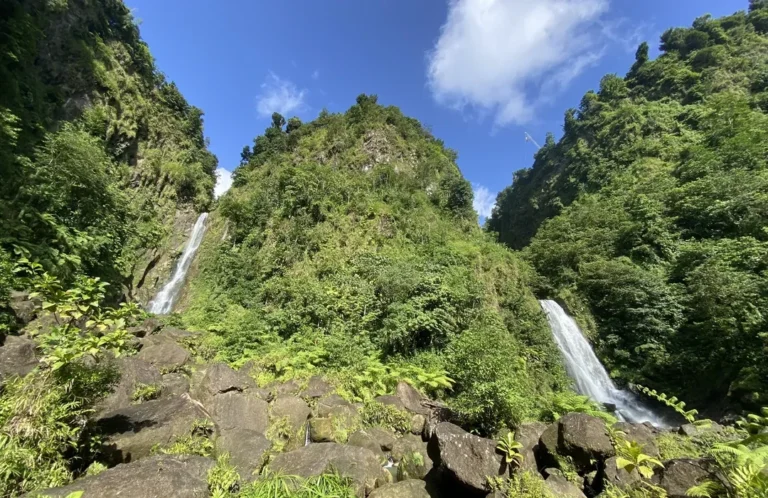Dominica is renowned for its dense, lush forests and is often called “The Nature Island of the Caribbean.” Forests cover over 60% of the island, playing a crucial role in its biodiversity, climate, water supply, and tourism.
Forests of Dominica – Overview
| Feature | Details |
|---|---|
| Forest Coverage | Over 60% of the island |
| Forest Types | Tropical rainforest, montane forest, cloud forest |
| Major National Parks | Morne Trois Pitons, Morne Diablotin, Cabrits |
| Wildlife Richness | Over 170 bird species, endemic flora and fauna |
1. Types of Forests in Dominica
Tropical Rainforest
- Found at low to mid elevations.
- Rich in hardwood trees like gomier, carapite, and bois diable.
- Home to orchids, ferns, and medicinal plants.
Cloud Forest / Montane Forest
- Found in higher elevations (above 1,200 meters).
- Constant mist and cool temperatures.
- Trees are stunted and covered with mosses and epiphytes.
- Boeri Lake and Freshwater Lake are located in this zone.
Dry Scrub and Coastal Forest
- Found along the western coast where it’s drier.
- Dominated by acacia, cactus, and coastal shrubs.
2. Major Protected Forest Areas
Morne Trois Pitons National Park (UNESCO World Heritage Site)
- Dominica’s most famous natural reserve.
- Includes:
- Boiling Lake
- Valley of Desolation
- Trafalgar Falls
- Diverse ecosystems from rainforest to cloud forest.
Morne Diablotin National Park
- Contains Dominica’s highest peak (Morne Diablotin – 1,447 m).
- Important for birdwatching (especially the Imperial Parrot).
- Densely forested and remote.
Northern and Southern Forest Reserves
- Government-managed reserves protecting watersheds, wildlife, and tree species.
3. Wildlife in Dominica’s Forests
- Sisserou Parrot (Imperial Amazon) – National bird, critically endangered, found only in Dominica.
- Jaco Parrot – Lesser Antillean endemic.
- Agouti, boa constrictors, tree frogs, and many lizards.
- Insects, butterflies, and native bats.
4. Importance of Forests
- Source of fresh water (Dominica has 365 rivers).
- Protection against landslides and erosion.
- Center of ecotourism and hiking (e.g., Waitukubuli National Trail).
- Used for medicinal plants, wild herbs, and traditional remedies.
- Home to many endemic and endangered species.
5. Threats and Conservation Efforts
Threats:
- Hurricanes (e.g., Hurricane Maria in 2017 caused massive forest loss)
- Deforestation (for agriculture or roads)
- Climate change
Conservation:
- Reforestation programs
- National parks and legal protections
- Environmental education and ecotourism
- Support from NGOs and international partners



